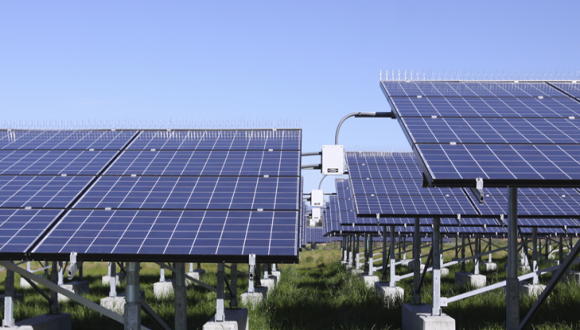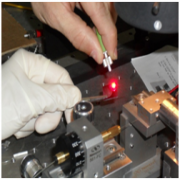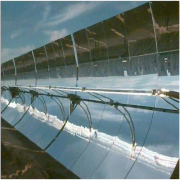Photon Enhanced Thermionic Emission (PETE) converters
Advanced modelling and experimental validation is required for improving and optimising the performance of the PETE converter. This would result in a dramatical increase in energy conversion efficiencies in combined cycles with a heat engine.
Advanced modelling and experimental validation is required for improving and optimising the performance of the PETE converter. This would result in a dramatical increase in energy conversion efficiencies in combined cycles with a heat engine.
PETE is a new and exciting concept in solar energy research. Whereas in standard photovoltaic applications only the semiconductor band gap can be considered as ‘useful voltage’, in PETE converters a thermal boost (due to the use of concentrated radiation) allows higher operating voltages to provide higher conversion efficiencies. In addition, under conditions of high photon flux, the energy barrier for electron emission is lowered, enabling efficient energy conversion at moderate temperatures that are typically insufficient for ordinary thermionic emission converters. As a result, the combined cycle of a PETE converter and a heat engine might theoretically reach efficiencies above 50% at flux concentration of 1000 suns.
Since PETE is an unexplored concept, little is known on the mechanisms participating in this conversion mechanism. As a result, the upper efficiency limit of this conversion mechanism is yet to be defined. The only PETE model reported to date does not take into account important aspects such as SRH and surface recombination in the semiconductor, spatial variations of charge carrier concentrations and temperature, and many more. Hence, an elaborate model is required in order to determine the PETE conversion efficiency upper limit. An understanding of these issues is essential for the optimal design of a PETE based converter that will achieve the highest conversion efficiencies possible. Additional effects can be considered for increasing conversion efficiencies, such as decoupling of the absorber and emitter areas – shown to improve efficiency in thermophotovoltaic (TPV) and thermophotonic (TPX) devices; the application of an external bias field or the creation of an internal field using a heterojunction; enhancing locally the field at the cathode to enhance electron emission by surface nanostructures. Investigating this wealth of phenomena and potential enhancements requires advanced modelling as well as experimental validation.







